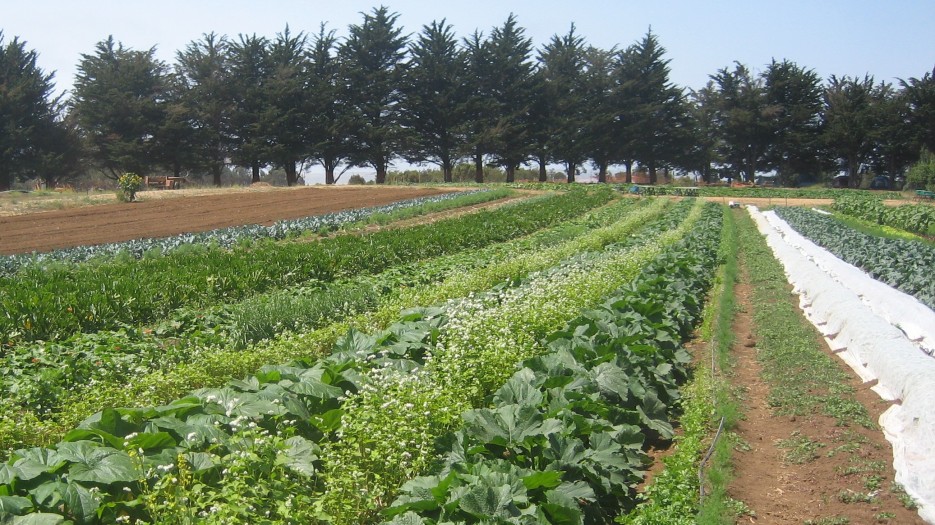FSMA: Right Around the Corner for Large Growers
The Food Safety Modernization Act (FSMA), the most sweeping reform of our food safety laws in more than 70 years, was signed into law by President Obama on January 4, 2011. After seven years and several rounds of rulemaking, the Produce Safety Rule will come into effect on January 26, 2018, for the largest produce growers in the United State, meaning those with $500,000 or more in revenue. FDA has emphasized the first year will focus less on regulation and compliance and more on education and readiness. But no doubt about it, times are changing on the produce farm.
FSMA is put into action by a series of rules that rules specify how the law should be carried out. These rules include Foreign Supplier Verification Programs (FSVP) for Importers of Food for Humans and Animals, Mitigation Strategies to Protect Food Against Intentional Adulteration, Preventive Controls for Food for Animals, Preventive Controls for Human Food, Sanitary Transportation of Human, and Animal Food and Standards for Produce Safety. While all of the rules will ultimately impact how FSMA’s food safety programs are carried out, it has been the Produce Safety Rule that has garnered the most interest and concern among produce growers.
The final Produce Safety rules were published in August and November 2015. Since that time, the industry has been actively preparing for the day when implementation would begin. In less than 30 days, the Produce Safety Rule will become a reality for growers with more than $500,000 in annual revenue. Small farms with sales between $250,000 and $500,000 come under compliance in January 2019. Very small farms, with sales greater than $25,000 but less than $250,000 will be regulated in January 2020.
The Produce Rule includes five main parts: biological soil amendments, domesticated and wild animals, worker training and health and hygiene; equipment, tools and buildings; and agricultural water and testing. Growers of sprouts have an additional set of rules, in addition to the above five. On January 26, growers of covered produce will be expected to be in compliance with the first four of the five parts.
With regards to the fifth part – agricultural water and testing – after significant concerns from the industry were raised, in September 2017, FDA proposed revised standards and compliance dates for agricultural water. The new agricultural water compliance date the FDA is proposing for the largest farms is Jan. 26, 2022. Small farms and tiny farms would have until Jan. 26, 2023, and Jan. 26, 2024, respectively. FDA’s new proposal for compliance standards for water quality standards and related testing is expected in 2018. It is believed that the proposed extension will give the agency time to take another look at the water standards to ensure that they are feasible for farmers in all regions of the country while protecting public health.
The industry eagerly awaits revised standards on agricultural water, but until then farmers on larger operations will be focusing on ensuring they are in compliance with the other elements of the Produce Safety Rule. The FDA and its state partners have stated that they will use 2018 to provide more education, training and outreach on the new requirements. In particular, states — in conjunction with the National Association of State Departments of Agriculture (NASDA) and the FDA — will expand On-Farm Readiness Reviews, already piloted in six states, in which a team of state officials, cooperative extension agents, and FDA produce experts provide farmers with an assessment of their “readiness” to meet the new requirements. Inspections to assess compliance will begin in 2019.
The On-Farm Readiness Review has been driven by the NASDA, in cooperation with the state departments of agriculture of Oregon, North Carolina, Michigan and Vermont. Additionally, four universities were asked to help develop materials. Those universities include University of Florida Extension, Michigan State Extension, North Carolina Cooperative Extension and Rutgers Cooperative Extension. The tool was tested this summer in six states: Michigan, Florida, North Carolina, New Jersey, Vermont and Oregon. Training on the tool will be provided regionally during the early part of 2018 so that representatives from state regulatory agencies and University extension in all states can be trained on using the tool in order to aid farmers as they work to achieve compliance. The video below reviews the tool, its history and future applications.
The natural next question is how many farms will need to come under FSMA Produce Rule compliance in less than four weeks. Not surprisingly, the definitions of produce covered by FSMA and the definition of produce covered by a NASS survey do not line up with 100 percent consistency. However, by using the 2012 Census of Agriculture as a rough data set, we can begin to understand the general level of impact. According to the 2012 Census of Ag, there were 6,647 farms with vegetable, melon, fruit and tree farming with sales of $500,000 or more. More or less, these are the “large farms”, as defined by FSMA that would need to be in compliance soon. This represents about 8 percent of all fruit, nut, vegetable and melon farms in the U.S.

This number probably overstates the number of farms in certain states – like North Dakota – which have a lot of farms that grow vegetables that are rarely consumed raw, like potatoes, and thus exempt from FSMA. Here is a list of what commodities are covered by FSMA and which are not. This number also probably understates the number of diversified farms that are impacted. The $500,000 threshold doesn’t just include produce sales; it includes all food sales, which would include sales of animal food, milk, etc. However, what the USDA data does generally show us is that we will all be looking towards California, Florida, Michigan, Washington and New Jersey to see what FSMA really looks like on the farm. It’s going to be a whole new, FSMA world out there.




